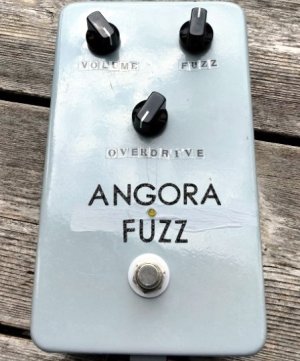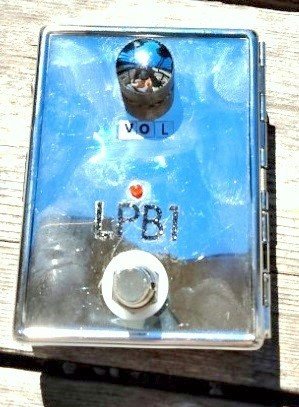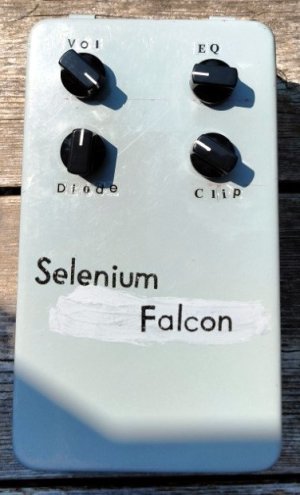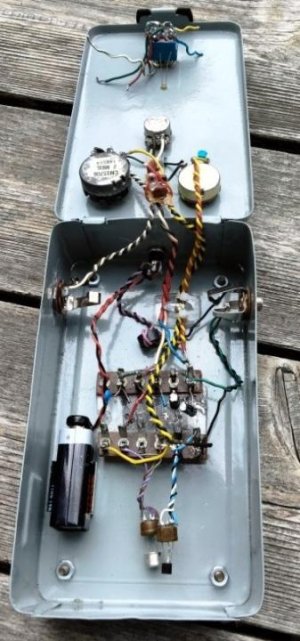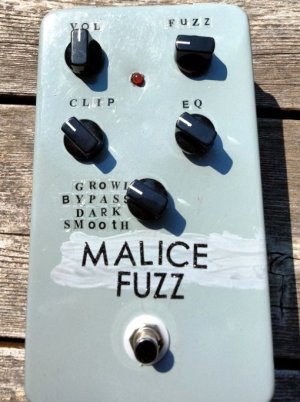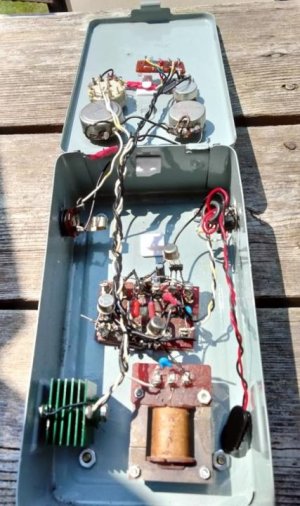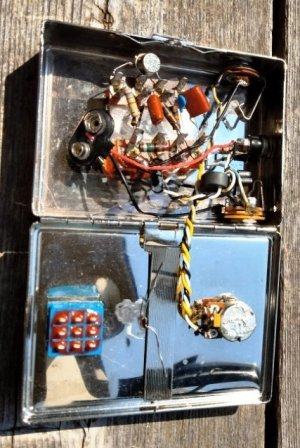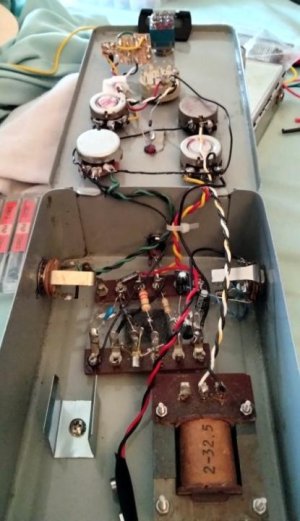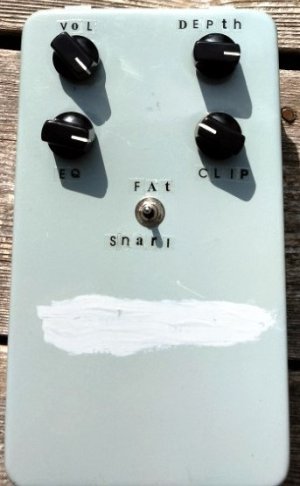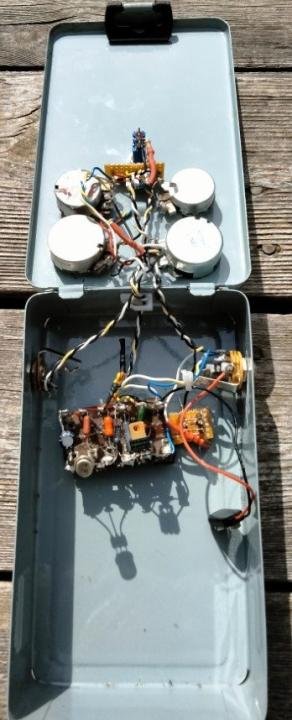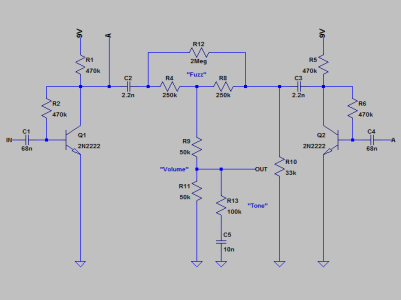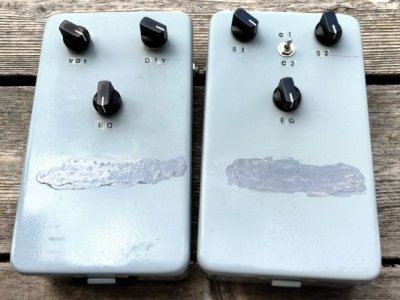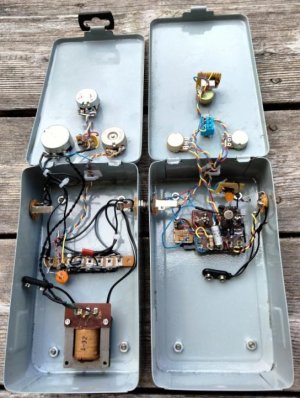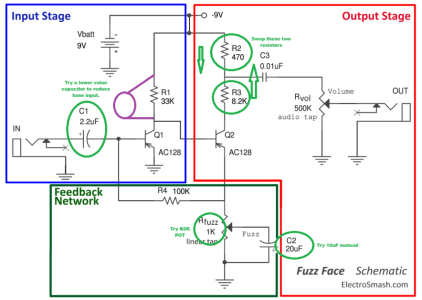idsnowdog
Imperator of Indignation
New builds:
- EHX LPB1 Clone - I failed to build a ZVEX SHO clone so I built an LPB1 instead. A nice dirty boost.
- Angora Fuzz - An NPN Si Fuzz Face clone. With BC108 in Q1 and 2N3053 in Q2. I call it the Angora Fuzz because it is the softest, warmest, and thickest fuzz I have heard. The secret is the 2N3053. It sounds a lot like a Ge but with more output. I added a Tube Screamer style asymmetric soft-clipping section with a white LED and Ge 1N34A diode for more warmth. If I turn down the fuzz and od up it's a wide-ranging overdrive. If I turn up the fuzz and the od down it's a fuzz.
- Malice Fuzz - An NPN Si Fuzz Face clone. With BC108 in Q1 and 2N2222 in Q2. The 2N2222 in Q2 sounds evil when driven hard so I added a hard clipping circuit. There's a multi-position switch with symmetric (Growl) clipping stage with two Si 1N914 diodes. An asymmetric (Dark) stage with a Ge 1N34A and a 1N5819 Schottky diode. An asymmetric (Smooth) stage with two Ge 1N34A diodes. It has an inductor for the tone circuit. More pedals should use inductors because you can get some vicious tones.
- Selenium Falcon - A hybrid three-transistor ToneBender MK.III clone. Q1 and Q2 are Ge 2N1377 transistors while Q3 is a Si 2N1132 transistor. Three stages of Ge transistors sound good but clarity suffers. I chose the Si 2N1132 since there was already plenty of gain in the first two stages and that's where 90% of the tone comes from. The last Si stage widened the frequency range without adding much extra gain. There's a multi-position switch with six single-diode hard clipping choices. These are UV LED, Ge 1N34A, Si 1N4148, Schottky 1N5819, Si FR38, and a Selenium rectifier. For the last six months wondering what a Selenium diode would sound like in a clipping circuit had kept me awake at night. The Selenium clipping diode sounds amazing! It is very harmonically rich and lively. I have an inductor with a bass-cut capacitor for the tone control. I couldn't find a gain control that sounds good because there's way more gain than a Fuzz Face. I wouldn't have thought that one more transistor would make much difference but luckily this is a very muscular, resonant, and high gain circuit even with the clipping stages added.
- *To be named later* - I have a PNP hybrid Mozrite Fuzzrite on the bench. This one has been perplexing! A Fuzzrite creates its "fuzz" by taking two identical gain stages and mixing them together to create phase cancellation, blocking distortion, and crossover distortion. Three things that you usually try to remove from a circuit. The result is a fuzz that sounds like a fistful of rusty razor blades. The problem is the normal tone-tweaking capacitor tricks don't work with a Fuzzrite. It's like backing a trailer. Left is right and right is left and what you're left with is the remainder of the two gain stages cancelling each other. So sustain is limited, the attack is vicious but the resonance sucks so palm muting doesn't sound good. I tried it with two Ge transistors but there was so much blocking distortion that there was no sustain and since the transistors I had a low HFE rating there was no energy to create anything other than high frequencies. I tried two Si transistors but most of the Si transistors I have are higher HFE. Higher HFE gave better sustain and a wider frequency range but excessive high-frequency noise. I settled on a hybrid design with Si in Q1 and Ge in Q2. Early on I couldn't make the mix pot work due to a defective pot. So I just tapped the output from either the first or second transistor. The funny thing is when taking the output from either of the transistors I get an 80/20 mix either way that sounds good. So instead of using a normal pot for the mix I'm using a blend pot. The blend pot gives a wider usable tonal range. I have a wider variety of PNP transistors than when I started so I will need to test more combinations. I suspect I will need to pay more attention to biasing to reduce noise and increase output since the tone seems to be determined more by energy than voicing with capacitors.
Attachments
Last edited:

